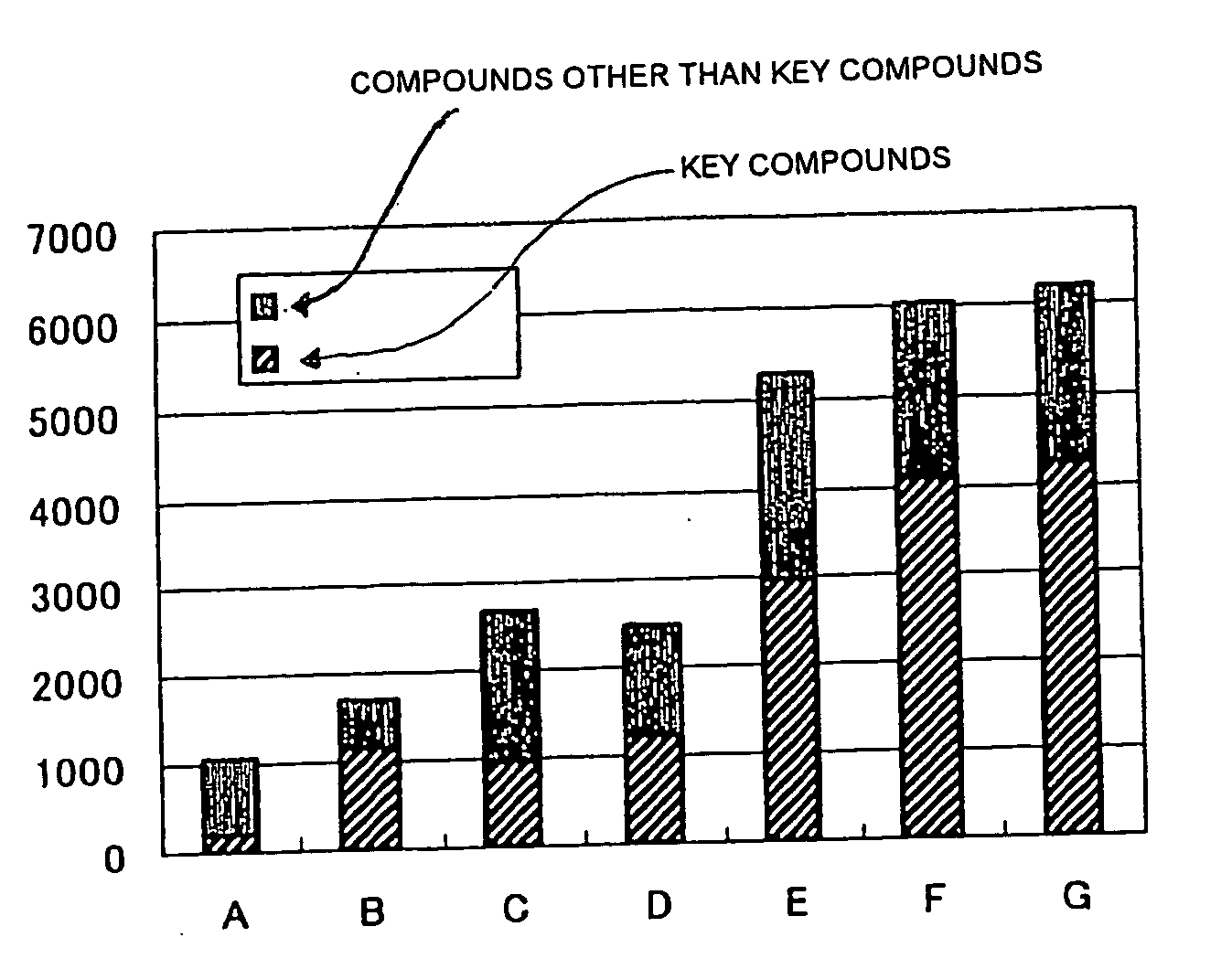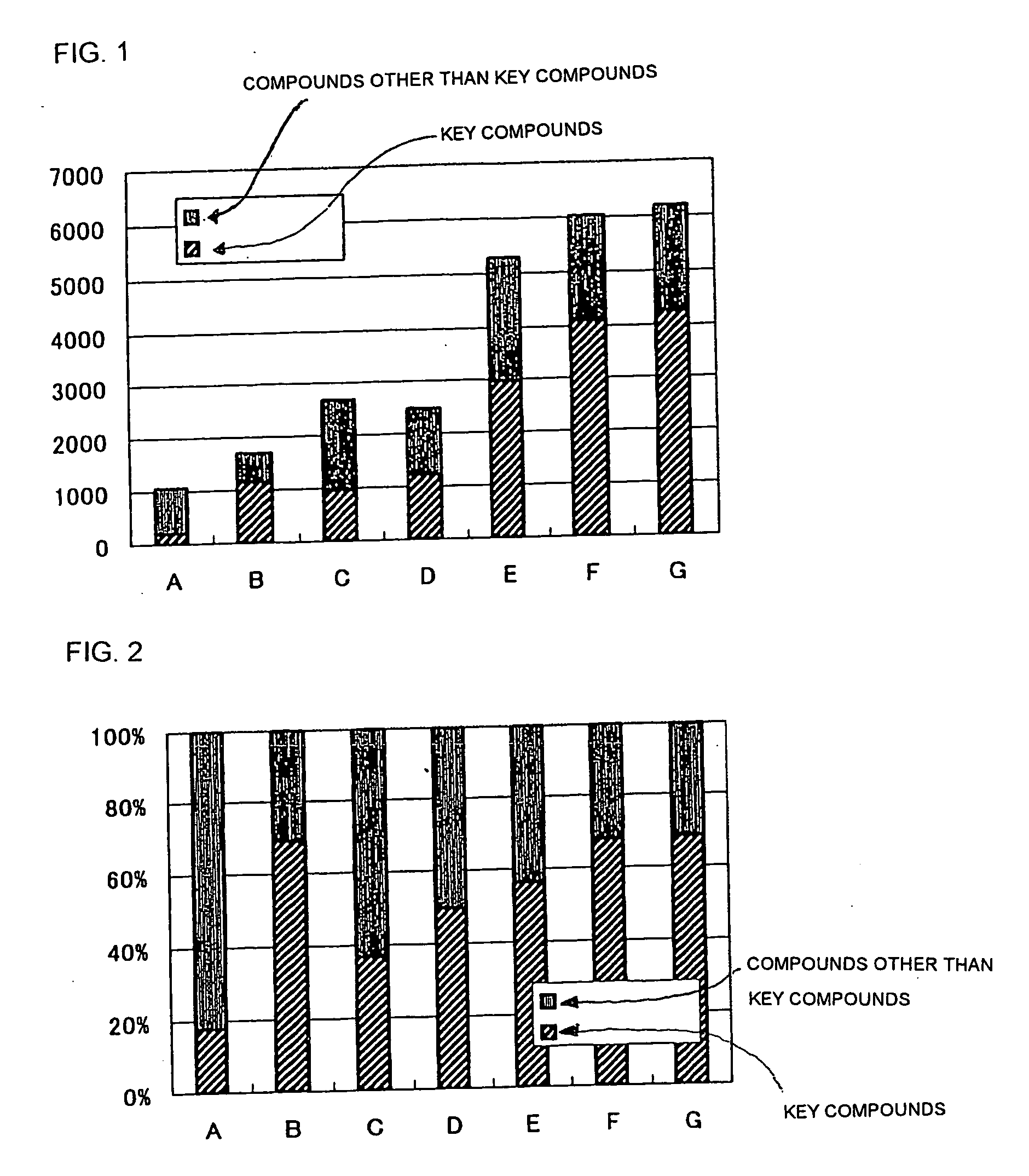Fresh tea leaf powder and processed product, extract, oil and aroma obtained from fresh tea leaf powder
a technology of fresh tea and processed products, applied in the field of fresh tea leaf powder and processed tea leaves, tea extracts and tea aroma, can solve the problems of poor aroma, poor taste, poor flavor of tea drinks produced by using them as starting materials, etc., and achieve the effect of inactivating enzymatic activities and inactivating enzymatic activities
- Summary
- Abstract
- Description
- Claims
- Application Information
AI Technical Summary
Benefits of technology
Problems solved by technology
Method used
Image
Examples
referential example 1
(Method of Preparing High-Grade Tea Extract)
[0075] By adding 500 ml of water, 50 g of green tea leaves (variety: Yame Okumidori or Koshun) were extracted at 50° C. for 3 hours under stirring. Then the solid part was separated from the liquid part by filtering through a gauze sheet. Next, the filtrate was treated at 80° C. for 10 minutes. After the treatment, it was quickly ice-cooled to room temperature (25° C.) to give the extract of high-grade tea leaves.
example 1
6.1. Example 1
(1) Preparation of Fresh Tea Leaf Powder
[0076] First harvested tea leaves (two to five leaves per center, early May) of green tea (variety: Yabukita) were plucked, washed with water and then freeze-dried. The fresh tea leaves were milled with a mill and passed through a 40-mesh sieve to give a fresh tea leaf powder (a) (an invention example). Separately, part of fresh plucked tea leaves were allowed to stand under shade conditions at room temperature (25° C.) for 1 to 48 hours and freeze-dried. Next, these leaves were milled with a mill and passed through a 40-mesh sieve to give fresh tea leaf powders (b) to (e) (invention examples). Further, part of the remainder of the fresh plucked tea leaves were physically damaged with a roll cutter and then allowed to stand under shade conditions at room temperature (25° C.) for 6 to 48 hours. Next, these leaves were freeze-dried, milled with a mill and passed through a 40-mesh sieve to give fresh tea leaf powders (f), (g) and ...
PUM
 Login to View More
Login to View More Abstract
Description
Claims
Application Information
 Login to View More
Login to View More - R&D
- Intellectual Property
- Life Sciences
- Materials
- Tech Scout
- Unparalleled Data Quality
- Higher Quality Content
- 60% Fewer Hallucinations
Browse by: Latest US Patents, China's latest patents, Technical Efficacy Thesaurus, Application Domain, Technology Topic, Popular Technical Reports.
© 2025 PatSnap. All rights reserved.Legal|Privacy policy|Modern Slavery Act Transparency Statement|Sitemap|About US| Contact US: help@patsnap.com


